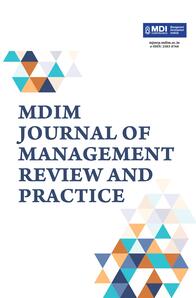
1 Department of Commerce, Tripura University, Agartala, Tripura, India
Creative Commons Non Commercial CC BY-NC: This article is distributed under the terms of the Creative Commons Attribution-NonCommercial 4.0 License (http://www.creativecommons.org/licenses/by-nc/4.0/) which permits non-Commercial use, reproduction and distribution of the work without further permission provided the original work is attributed.
A long-due Indian direct tax administrative reform for removing the taxpayers’ plight and widening the tax base gained momentum by introducing the faceless assessments and appeals scheme coupled with taxpayers’ tax charter. Following a descriptive approach, the study assesses whether the reform would end the tax disputes. Albeit, ideally, any tax system should be simple, efficient, transparent, and free from conflicts. The Indian taxation saga indicates an infamous tug-of-war between the taxpayers and the revenue-seeking tax officers. Serving strange tax demand notices and retrospective amendments of the tax laws created a phobia of ‘tax terrorism’ in honest taxpayers’ minds. Considering this, the government followed the digital route with no physical interaction between the taxpayers and tax officers for tax assessments and appeals. Moreover, fixing the responsibilities of the taxpayers and tax officers would minimize tax disputes substantially if addressing the apprehensions and teething problems appropriately, addressing the apprehensions and teething problems.
Tax reform, tax administration, tax terrorism, tax evasion, FAS
Ahmad, E., & Stern, N. (1991). Theory and practice of tax reform in developing countries. Cambridge University Press.
Alm, J. (2012). Measuring, explaining, and controlling tax evasion: Lessons from theory, experiments, and field studies. International Tax and Public Finance, 19, 54–77. https://link.springer.com/article/10.1007/s10797-011-9171-2
Almunia, M., & Lopez-Rodriguez, D. (2018). Under the radar: The effects of monitoring firms on tax compliance. American Economic Journal of Economic Policy, 10(1), 1–38.
Bajaj, T. (2022, March). Tax proposals. Yojana- A Development Monthly, 19–25.
Best, M., & Kleven, H. (2013, February). Optimal income taxation with career effects of work effort. LSE, mimeo. https://www.henrikkleven.com/uploads/3/7/3/1/37310663/best-kleven_careers_feb2013.pdf
Chakravarty, P. (2020, September 2). The myth of India’s low-income tax base. The Hindustan Times, p. 6. https://www.hindustantimes.com/analysis/the-myth-of-india-s-low-income-tax-base/story-UlN3FLG6NNzQilt09BSXnN.html
Cotorceanu, P. A. (2015). Hiding in plain sight: How non-U.S. persons can legally avoid reporting under both FATCA and GATCA. Trusts & Trustees, 21(10), 1050–1063.
Deb, R., & Chakraborty, S. (2017). Tax perception and tax evasion. IIM Kozhikode Society & Management Review, 6(2), 1–12.
De Simone, L., Lester, R., & Markle, K. (2020). Transparency and tax evasion: Evidence from the foreign account tax compliance act (FATCA). Journal of Accounting Research, 58(1), 105–153.
Focanti, D., Hallerberg, M., & Scartascini, C. (2013). Tax reforms in Latin America in an era of democracy (IDB Working Paper IDB-WP-457).
Ilzetzki, E. (2018). Tax reform and the political economy of the tax base. Journal of Public Economics, 164, 197–210. https://doi.org/10.1016/j.jpubeco.2018.06.005
IMF. (2015). Current challenges in revenue mobilization: Improving tax compliance. International Monetary Fund.
Lai, M. L., & Choong, K. F. (2010). Motivators, barriers and concerns in adoption of electronic filing system: Survey evidence from Malaysian professional accountants. American Journal of Applied Sciences, 7(4), 562–567.
Lavi, M. (2020, August 28). Faceless and seamless. The Business Line, p. 5.
Lokeshwarri, S. K. (2020 August 27). Why that fall in taxpayers is not worrisome. The Business Line, p. 4.
Lu, C.-T., Huang, S.-Y., & Lo, P.-Y. (2010). An empirical study of on-line tax filing acceptance model: Integrating TAM and TPB. African Journal of Business Management, 4(5), 800–810.
Memani, R. (2020, August 14). The future of tax reforms is based on trust and tech, The Mint, p. 13. https://www.livemint.com/opinion/online-views/the-future-of-tax-reforms-is-based-on-trust-and-tech-11597367143771.html#:~:text=Together%20with%20faceless%20appeals%2C%20to,and%20resources%20of%20the%20taxpayers.
Mishra, P. R. (2021 July 14). GST has increased India’s reliance on indirect taxes, hurting the poor. The Wire. https://thewire.in/economy/gst-india-indirected-taxes-inequality
Neog, Y., & Gaur, A. K. (2020). Tax structure and economic growth: A study of selected Indian states. Economic Structures, 9, Article 38. https://doi.org/10.1186/s40008-020-00215-3
Neuman, S. S., Omer, T. C., & Schmidt, A. P. (2020). Assessing tax risk: Practitioner perspectives. Contemporary Accounting Research, 37(3), 1788–1827. https://doi.org/10.1111/1911-3846.12556
Ojha, A., Sahu, G. P., & Gupta, M. P. (2009). Antecedents of paperless income tax filing by young professionals in India: An exploratory study. Transforming Government: People, Process and Policy, 3(1), 65–86.
Patnaik, S. R., Thangadurai, V. P., & Gupta, R. (2021, November 24). Faceless assessment: Is this the right cure? Indian Tax Law. https://tax.cyrilamarchandblogs.com/2021/11/faceless-assessment-is-this-the-right-cure/
Pomeranz, D., & Vila-Belda, J. E. (2019). Taking state-capacity research to the field: Insights from collaborations with tax authorities. Annual Review of Economics, 11, 755–781. https://doi.org/10.1146/annurev-economics-080218-030312
Prichard, W., Custers, A., Dom, R., Davenport, S., & Roscitt, M. (2019). Innovations in tax compliance: Conceptual framework (Policy Research Working Paper 9032). The World Bank.
Punj, V. (2021, August 29). Vivad se Vishwas deadline for payment without additional amount extended till September 30. The Mint, p. 6. https://www.livemint.com/news/india/vivad-se-vishwas-deadline-for-payment-without-additional-amount-extended-till-september-30-11630233872665.html
PWC, World Bank Group. (2020). Paying Taxes 2020: The changing landscape of tax policy and administration across 190 economies. https://www.doingbusiness.org/content/dam/doingBusiness/pdf/db2020/PayingTaxes2020.pdf
Roy, E. (2022, March 29). Replace Income Tax Act with Direct Taxes Code: Chidambaram in Rajya Sabha. The Indian Express, p. 1. https://indianexpress.com/article/india/replace-income-tax-act-with-direct-taxes-code-chidambaram-7841703/
Sancak, C., Liu, L. Q., & Nakata, T. (2011). Canada: A success story. In Mauro P. (Ed.), Chipping away at public debt. John Wiley & Sons.
Shome, P. S. (2019 March 20). Appropriate tax administration. The Business Standard, p. 9. https://www.business-standard.com/article/opinion/appropriate-tax-administration-119032000034_1.html
Sikes, S. A., & Verrecchia, R. E. (2020). Aggregate corporate tax avoidance and cost of capital [Working Paper]. University of Pennsylvania.
Slemrod, J., Rehman, O. U., & Waseem, M. (2019). Pecuniary and non-pecuniary motivations for tax compliance: Evidence from Pakistan (NBER Working Paper No. 25623).
Standing Committee on Finance. (2019, December). Second report (Seventeenth Lok Sabha) on demands for grants (2019-20) of the Ministry of Finance (Department of Revenue). https://eparlib.nic.in/handle/123456789/787631?view_type=search
Venkatesh, V., Sykes, T. A., & Venkatraman, S. (2013). Understanding e-government portal use in rural India: Role of demographic and personality characteristics. Information Systems Journal, 24(3), 249–269.
Vishnevsky, V., & Chekina, V. (2018). Robot vs. tax inspector or how the fourth industrial revolution will change the tax system: A review of problems and solutions. Journal of Tax Reform, 4(1), 6–26.